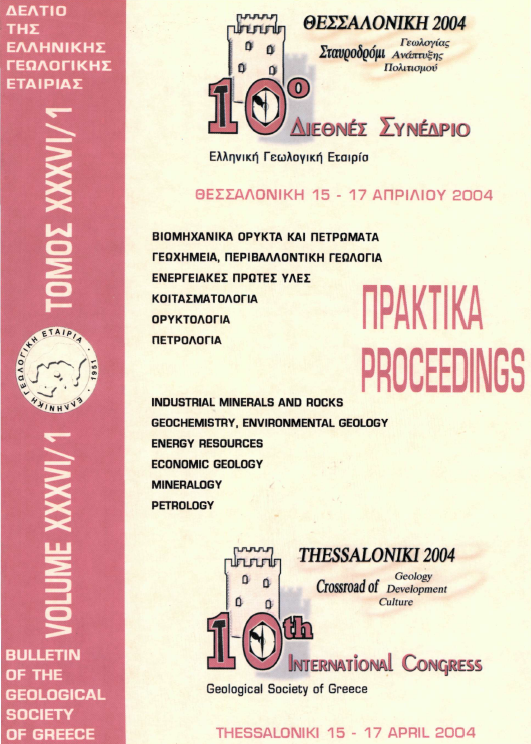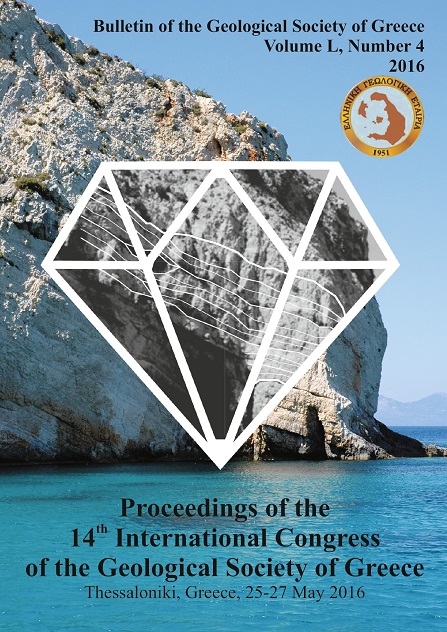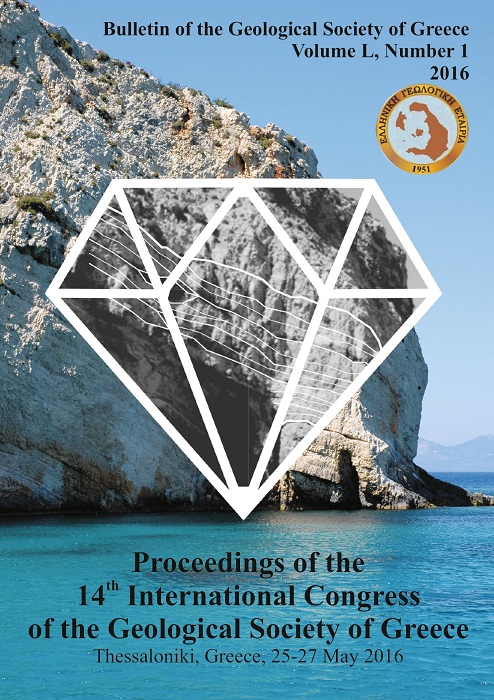PROVENANCE OF PINDOS FLYSCH DEPOSITS IN METSOVO AND FOURNA AREAS USING SCANNING ELECTRON MICROSCOPY AND MICROANALYSIS
Περίληψη
Pétrographie observation of sandstones that contain detrital grains and lithic fragments along with microanalytical data from certain minerals suggest that detrital material in Pindos flysch deposits, in Metsovo and Fourna areas, may have been sourced in the Pindos ophiolite and the Pelagonian metamorphic rocks; additionally some material from Fournas has probably been derived from the Koziakas ophiolite outcrop. The Loumnitsa Unit (Pindos ophiolite), has probably supplied the Pindos foreland with ma+erial from the erosion of amphibolites while the Dramala Unit was the most probable source of spinels and ultramafic material. Fragments of acid plutonio rocks have been observed, too, owing their origin from the plutonite of Vamounta-Kastoria (Pelagonian Zone). The area of Fourna has been also fed by the Koziakas ophiolites, as evidenced from the composition of chlorites and epidotes.
Λεπτομέρειες άρθρου
- Πώς να δημιουργήσετε Αναφορές
-
Ananiadis, G., Vakalas, I., Zelilidis, A., & Tsikouras, B. (2004). PROVENANCE OF PINDOS FLYSCH DEPOSITS IN METSOVO AND FOURNA AREAS USING SCANNING ELECTRON MICROSCOPY AND MICROANALYSIS. Δελτίο της Ελληνικής Γεωλογικής Εταιρείας, 36(1), 534–541. https://doi.org/10.12681/bgsg.16750
- Ενότητα
- Πετρολογία

Αυτή η εργασία είναι αδειοδοτημένη υπό το CC Αναφορά Δημιουργού – Μη Εμπορική Χρήση 4.0.
Οι συγγραφείς θα πρέπει να είναι σύμφωνοι με τα παρακάτω: Οι συγγραφείς των άρθρων που δημοσιεύονται στο περιοδικό διατηρούν τα δικαιώματα πνευματικής ιδιοκτησίας επί των άρθρων τους, δίνοντας στο περιοδικό το δικαίωμα της πρώτης δημοσίευσης. Άρθρα που δημοσιεύονται στο περιοδικό διατίθενται με άδεια Creative Commons 4.0 Non Commercial και σύμφωνα με την οποία μπορούν να χρησιμοποιούνται ελεύθερα, με αναφορά στο/στη συγγραφέα και στην πρώτη δημοσίευση για μη κερδοσκοπικούς σκοπούς. Οι συγγραφείς μπορούν να: Μοιραστούν — αντιγράψουν και αναδιανέμουν το υλικό με κάθε μέσο και τρόπο, Προσαρμόσουν — αναμείξουν, τροποποιήσουν και δημιουργήσουν πάνω στο υλικό.






